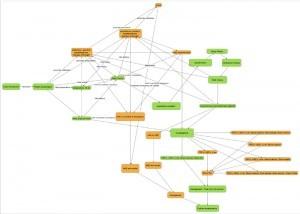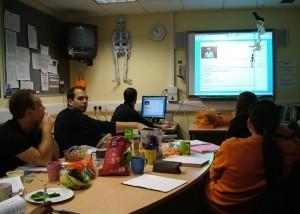Luke Woodham and Chara Balasubramaniam from the e-Learning Unit at St Georges’ University of London, UK, write about the OpenLabyrinth Virtual Patient system, one of the VP players used in the eViP programme.
OpenLabyrinth is an open-source, web-based Virtual Patient (VP) system. The original version of Labyrinth was developed at the University of Edinburgh, with work on OpenLabyrinth continuing at the Northern Ontario School of Medicine.
The eLearning Unit at SGUL has been established since 2000 with a primary focus on managing, developing, implementing and evaluating innovative e-content for medical and healthcare education, both within SGUL and the wider community.
Since 2005 the Unit has been exploring the use of VPs designed and content-enriched by clinicians for use as supplementary resources in the curricula. All of the SGUL VPs have been created using OpenLabyrinth.
Open Labyrinth: Branching out
Unlike other eViP partner systems, OpenLabyrinth uses a branched VP model – the other systems are either ‘linear’ or ‘semi-linear’.
A branched VP is similar in style to a game-based exercise, and allows users to determine their own path through a case. The narrative of the patient (and potentially the outcome) is altered according to the choices made by users.
This approach enables learners to explore the options available to them, and the potential consequences of the path that they choose.
Enhanced content, enhanced experience
 When playing a case, the students are initially presented with the current information about the patient. This can include text describing the narrative of the case or supporting media in the form of images, sound or video.
When playing a case, the students are initially presented with the current information about the patient. This can include text describing the narrative of the case or supporting media in the form of images, sound or video.
The student is provided with materials that require interpretation, such as test results, charts, and resources such as videos that make the experience more immersive for participants.
Having analysed the information, the learners then make a choice from a number of options presented on-screen.
Any number of options may be available with subtle differences that require good subject knowledge to make the correct choice.
Indeed, there need not be a “correct” option, instead having alternative treatments or options which are equally valid.
Benefits of using Open Source tools
OpenLabyrinth cases are authored by subject-matter experts using VUE (Visual Understanding Environment), an open-source tool developed by Tufts University.
This tool provides an intuitive way to develop and visualise a decision tree representing a VP case, which can then be imported straight into OpenLabyrinth.
SGUL uses Problem Based Learning (PBL) as a primary method of delivery for its medical curriculum. Due to the branching nature of OpenLabyrinth, these VPs have been successfully implemented as a replacement to traditional paper-based PBL to form a more interactive ePBL using branched VPs with many options, choices and consequences.
Sessions are conducted with small groups who view the VP on a single, shared display. These groups then discuss the available options, forming a consensus upon the most appropriate course of action, before repeating the process at the next stage.
This approach allows learners to pool their knowledge and learn from each other through discussion, as well as from the information and choices provided by the OpenLabyrinth system.
OpenLabyrinth has also been used with other learning models, such as self-directed learning by individuals, both within SGUL and at other institutions who have adopted the system.Cases have also been written with a view to using VPs for assessment.
OpenLabyrinth is a powerful platform for delivering game-based learning exercises, which have been proven to be effective for learners.
Development on the tool is ongoing, with the potential for new functionality to be developed in the future, and due to its availability on an open-source licence the system can be customised.
The web-based nature of the tool means that it is platform-independent from the user-perspective, and easily accessible from any machine through a browser, making it ideal for use in an educational environment.
By Luke Woodham and Chara Balasubramaniam, St Georges University of London, UK.


